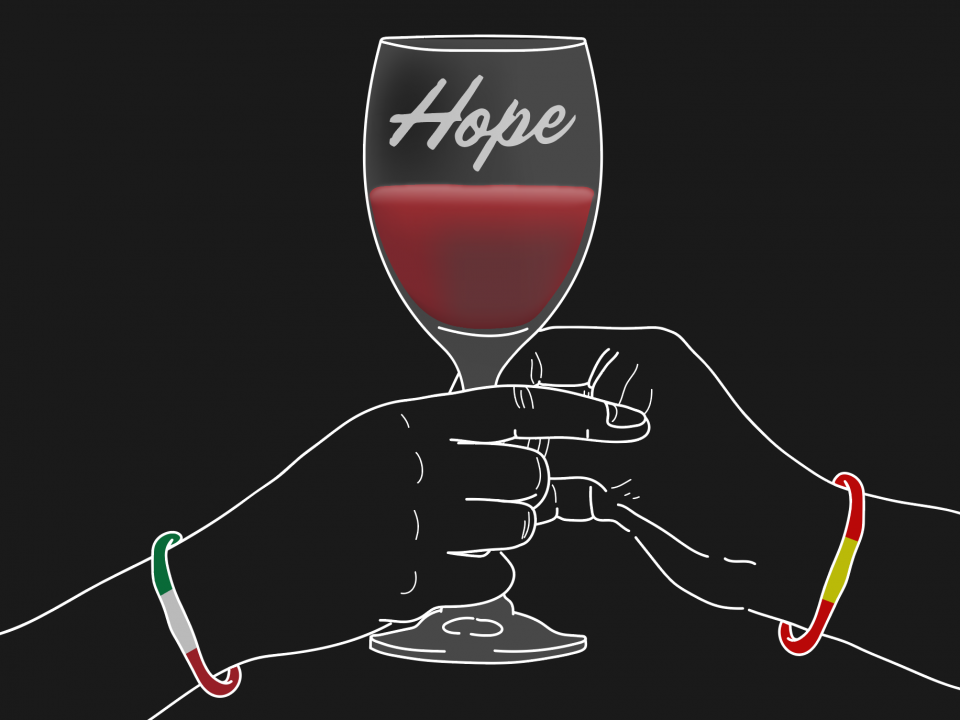
A European mystery: the difference between PGI, VdT, IGP
October 30, 2019
Thirty-six new heroes join the Native Grape Odyssey community at the Maestro course in Russia
November 14, 2019If we were asked to think of a single word that could describe the Protected Designation of Origin PDO, the first word that we would come up with is “protection”.
You may have already guessed that PDO stands for “Protected Designation of Origin”, the phrase indicates a product whose origins are safeguarded. The term was coined in 1992 by the European Union, and was created at the same time as the PGI classification, which we discussed in the article on the difference between PGI, VdT and PGI.
PDO products, unlike PGI, give consumers one more guarantee, if that is what we could call it. This label is only given in cases where each stage of the production process, from the bunch to the bottle, has been made and completed in a defined geographical area. Moreover, before being placed on the market, each product is subject to specific chemical-physical and organoleptic analyses, which must confirm the parameters submitted by its personal Bible, i.e. the production regulations. The area in question often coincides with a region, in rare cases with a decisive country. The place, thanks to its unique combination of human and environmental factors, will therefore be the decisive quality guarantee for the certified product.

Italy and Spain in comparison
Although this should come as no surprise, Italy is the European country with the most PDO and PGI recognized by the European Union, there are 295 food products and 523 certified wines, of which 334 PDO. In Italian, PDO is translated as DOP; and very often, for the wine sector, the acronym DOC is used instead, “Denominazione di Origine Controllata”.
It is therefore not difficult to imagine that the demand for Italian products abroad is equally significant, especially in an era when the demand for quality seems to exceed the importance placed on quantity. To give you an idea, the region that has now been awarded the most DOC’s is Piedmont, which has 42, and thereafter, Tuscany, which has 40. If the name of the region does not sound familiar to you, perhaps you will recognize the names of the wines, such as Dolcetto d’Alba DOC, or a Rosso di Montepulciano DOC.
In Italy, moreover, there is a substantial production of DOCG denomination of origin wines (77 in total), an acronym that stands for “Denominazione di Origine Controllata e Garantita” (Controlled and Guaranteed Denomination of Origin). This acronym corresponds to the highest step in the pyramid of designations of origin, and indicates a product that is even further prized and obtained through compliance with even stricter production standards. Their qualitative characteristics also derive from natural, human and historical factors that come from that specific region of origin; over time, these have acquired a very high commercial value internationally. Italian law also stipulates that, for greater control, each DOCG must have at least 5 years of experience under their belt, having been among the DOC wines first, before climbing that step to DOCG. However, DOCG is more complex and producers must jump though a lot of hoops to finally obtain the ranking.
In Europe, in addition to the “Made in Italy” class of products, the “Made in Spain” brands also take their rightful place among the great names within the EU. Spain boasts 66 DOs (Denominacion de Origen), most of which are located on the Mediterranean coast. In this case we are talking about twenty different denominations, among which, perhaps the best known is Cava DO. Another example comes from a variety called “Garnacha”, a grape that true experts will surely recognize, there are 5 quality DOCs that stem from “Garnacha” on the market today: Calatayud, Campo de Borja, Cariñena, Somontano and Terra Alta, located in the north-east of the Iberian Peninsula.

What is known in Italy as DOCG, in Spain it is known as DOCa – “Denominacion de Origen Calificada”, a demonination that is notoriously difficult to obtain, so much so that there are only two in existance: Rioja, from the grapes of the Duero River Valley, and Priorat; perhaps the best-known denomination from Spain, from the vines of the wine-growing region of Priorat, the jewel of Catalonia.

Therefore, a DOC classification acts as a safeguard for European wine products (and not only that), it stands as a symbol of strength and it benefits the territory. It is within these territories that these products are born, grow and are transformed. If we were to imagine every small or large plot of European territory as a parent, for every DOC created within that space, after tasting it, we might say, “your features all come from your mother’s side”. And, in this case, it would be a very appreciated compliment.



